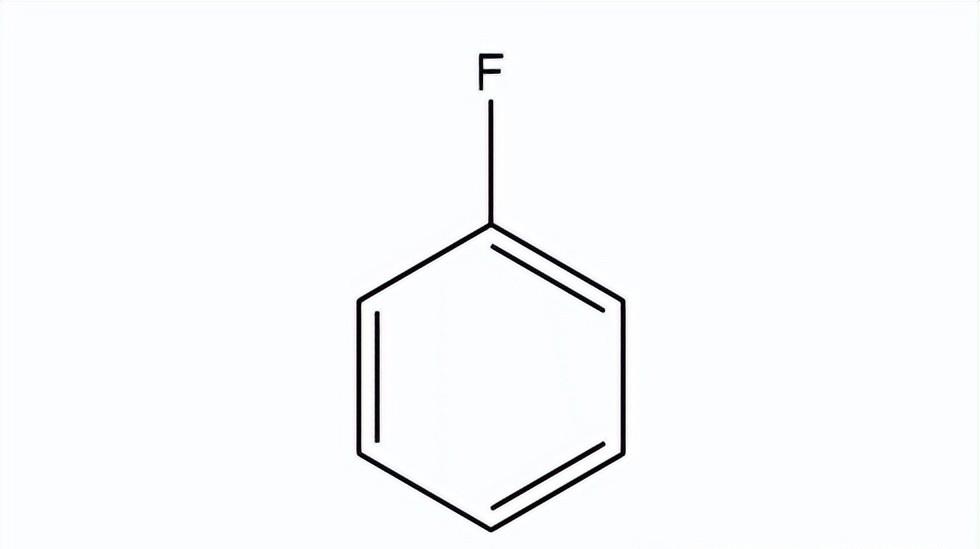Fluorobenzene (C6H5F), also known as fluoride benzene, is a kind of fluoride, which is widely used in chemicals such as medicine, agriculture and industrial manufacturing. In medicine, fluorobenzene is used to synthesize antipsychotic drugs such as fluorobutol, dalobutylbenzene, trifluoroperidine alcohol and other antipsychotic drugs; pesticides, fluorobenzene is used to synthesize insecticides such as fiproclamide, fluorosilazole, fluorochloroceryritonol, fluorophenylpyrimidineol and other insecticides; in engineering plastics, fluorobenzene is an intermediate of polyetherketone, polyetheretherketone monomer and liquid crystal material. At present, the pharmaceutical fluorobenzene is the largest market segment of the fluorobenzene industry, accounting for about 65% [1], the mainland is one of the main suppliers of the global fluorobenzene industry, and has a strong influence in the global fluorobenzene industry.
Fluorobenzene is toxic and irritating and can have serious effects on human health. At present, there are no laws and regulations that limit the emission concentration of fluorobenzene, but there are requirements for the fluoride in which fluorobenzene is located. According to GBZ2.1-2007 "Occupational Exposure Limits for Harmful Factors in the Workplace - Chemical Harmful Factors", the maximum allowable concentration of fluoride (without hydrogen fluoride) in the air, including fluorobenzene(without hydrogen fluoride), is 2mg/m3[2], if all the fluoride emitted is fluorobenzene, it can be simply understood that the maximum allowable concentration of fluorobenzene emitted in the air under the standard conditions is up to 460 ppbV.

Fig. 1 Fluorobenzene structure
Figure 2 Time series of concentrations of fluorobenzene, acetone, benzene, and xylene on the voyage path
During the voyage of a park, we used the vehicle-mounted Vocus PTR-TOF to conduct a "blind test" of the atmospheric VOCs in the park: that is, there was no emission characteristic factor information of the enterprises in the park before the measurement began. Under the leadership of the management personnel of the environmental department of the park, the walking car entered the factory area of the enterprise and made random measurements, and a strong response was detected at the position of m/Q 97.045 at a certain point in time (see Figure 2), and the trend of the signal was significantly different from the signal trend of acetone, benzene, xylene and other substances measured synchronously, from 10:09:30, the signal began to rise sharply, and the maximum value of the signal was detected at 10:14:00, and the peak concentration of the semi-quantitative [3] was about 157.3 ppbV。
Because this quality was an unconventional factor, it was not added to the list at that time. After briefly checking the precise quality of the signal (m/Q 97.045) and comparing the database, we characterized the signal as fluorobenzene (C6H5FH+). The isotope distribution positions of fluorobenzene at 12C and 13C of this peak were m/Q 97.045 (100%), m/Q 98.048 (6.56%), respectively, and the isotopes were distributed in the real-time mass spectrometry of the isotope positions in Figure 3(b), which was well matched. Secondly, in the later verification, the personnel of the enterprise also confirmed that the chemical raw materials used by the enterprise in production contained fluorobenzene.
It is worth noting that there are also a variety of different substances at the mass of m / Q 97, the more common ones are furan formaldehyde (C5H5O2 +, m/Q = 97.028) and 2-ethylfuran (C6H9O+, m/Q = 97.065). Both of these substances will cause great interference with the qualitative analysis of fluorobenzene, such as the accurate mass detected is not accurate enough due to the resolution of the mass spectrometry instrument, which will produce a fundamental deviation from the qualitative results. Theoretically, in order to distinguish these three substances, the mass resolution of the mass spectrometry instrument needs to be at least 3000 Th/Th.
(a)
(b)
Figure 3 Mass spectrogram in Voxus PTR-TOF voyage monitoring in H3O+ mode: (a) Mass axis position. (b) Isotopic position
bibliography:
[1]https://mp.ofweek.com/xincailiao/a456714798087
[2] Occupational Exposure Limits for Workplace Hazardous Factors — Chemical Hazards, GBZ2.1-2007
[3] https://www.tofwerk.com/zh-hans/vocus-ptr-toflingminduxiaozhunwenyizhishi/